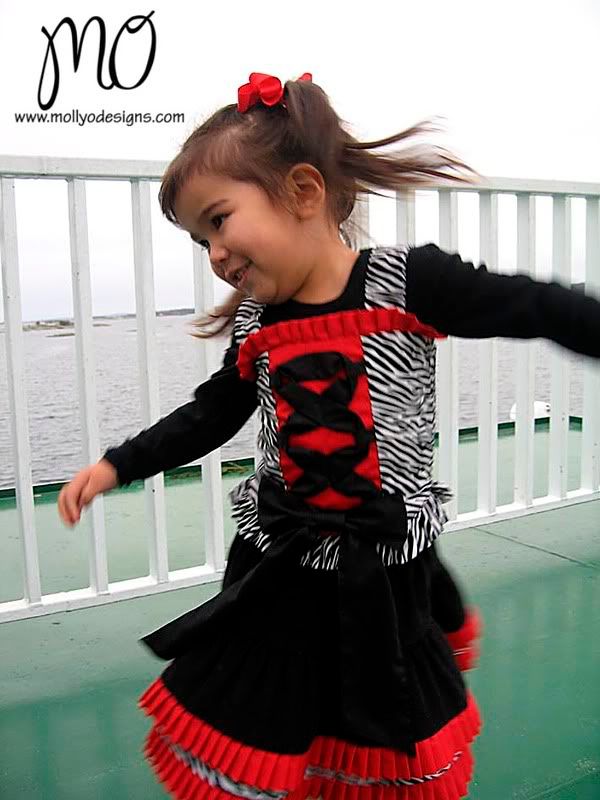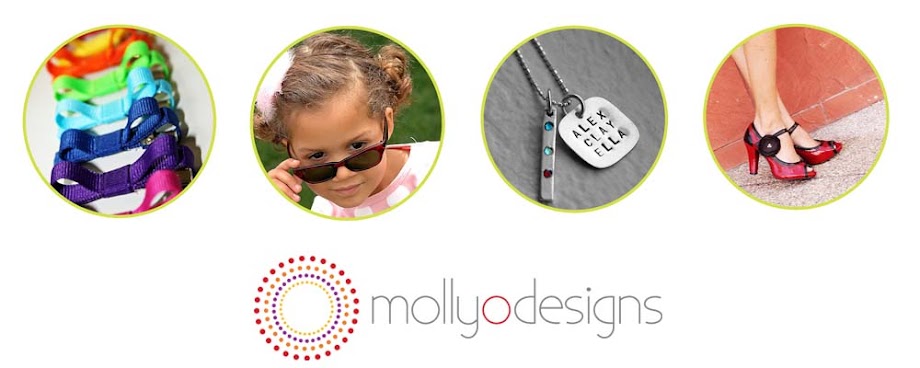Congress will be meeting on December 10th to discuss the CPSIA regulation and the impact it will have on our economy. Below is the letter that I sent to my representative. It was written by a group of industry experts. While it may not apply directly to you if you are not a designer, you can feel free to change the opening to reflect your support.
Here is the
link to email your representative. Thank you from the bottom of my heart for your support!
I am writing on behalf of my self and other small manufacturers of children’s apparel and textile products throughout the United States to express our concerns regarding the lead and lead in paint standards as mandated by the Consumer Product Safety Improvement Act (CPSIA).
We want to first emphasize that many of us are parents ourselves and care as much about the safety of our children as anyone. We welcome measures that will help to ensure greater child safety with regard to lead. However, such measures are only effective if they target the real risks.
Lead in children’s apparel and other textile products pose little risk
There is very little research to support the notion that lead in textiles presents a significant risk to children. On the contrary, in his presentation to the May 13, 2008 Consumer Product Safety Commission (CPSC) roundtable, Understanding the Pending Legislation and the Use of Lead in Consumer Products, Mr. Hardy Poole makes the argument that the lead content in textiles is actually very low. Mr. Poole, president of the National Textile Association, is considered a leading expert in the textile industry with than 30 years of experience including working with the CPSC on fabric flammability standards.
In his presentation, Mr. Poole cited dyes, dyestuffs and pigments used in coloring fabrics as the primary source of lead in textiles and pointed out that the dyes produced by the major suppliers to the U.S. textile industry are already required to comply with the standards for trace metal impurities. These standards allow a maximum lead content of 100 ppm, which is well below the CPSC interim goal of 300 ppm and consistent with the ultimate goal of 100 ppm. Mr. Poole added that these suppliers offer no lead complex dyes and that he knows of no operation in the United States using lead-based pigments in the dyes produced for the textile industry. Currently, there is no lead added to yarns or fabrics manufactured domestically. Regarding imported textiles, Mr. Poole indicated that the testing of imported fibers and fabrics reveal none or only trace levels of lead.
It is important for the CPSC to recognize that the majority of the materials used to manufacture apparel and other textile products are inherently lead-free. Textiles (both synthetic and natural) and thread are inherently lead-free. While trace elements may be found in some dyes, those amounts are well below the regulatory limits and the consensus in the industry is that lead is not found in or used in textile dyes. Even if trace materials existed in the materials used to produce the textiles, very little would remain on finished fabrics because of the low application levels and the washing that occurs during processing.
Without prudent regulation and clear guidance from the CPSC, the CPSIA will result in unintended and devastating consequences to manufacturers of children’s products that pose little to no risk of lead exposure to children.
The costs of unnecessary testing and its impact on our businesses
Requiring expensive tests on inherently lead-free products to verify that they, in fact, don’t contain lead will only add financial burdens to small manufacturers and ultimately consumers – most of whom are already suffering from the current economic climate – while providing no improvement in consumer or product safety.
We recognize that some types of children’s apparel contain components that may contain lead. However, metal, painted plastic, and vinyl components in children’s apparel (painted and/or metal buttons, snaps, zippers, decals, etc.) are adequately regulated under the requirements for third party testing for lead in paint.
The CPSC has the authority to exclude components and classes of products from the lead ban. Accordingly, we urge the CPSC to issue guidance that makes clear that textiles and apparel are only subject to the lead and lead in paint requirements to the extent that a component presents a risk that it contains lead.
We are also concerned about the apparent requirement to test the component – both as a stand alone component and also as an element of the entire garment. This redundancy greatly multiplies the cost associated with testing.
For example, the cost of digestive testing for lead is in the range of $130 to $180 per test. A garment with two metal component parts, such as a zipper and snaps, would have to test each component separately at a cost of $360. Previously, a small manufacturer might have been spread these costs out over several styles by incorporating the same zippers and snaps into several styles. Let’s assume a manufacturer produces 10 styles. Now, with new regulations that require testing of each component part after it is removed from a sample garment, one in each style, the costs of testing increase dramatically to $3,600.
These costs multiply exponentially if companies are now required to test fabrics and threads for lead, or if different dyes also trigger their own lead tests. Going back to the previous example, if each style contains six components – body fabric, lining, knit cuff, thread, snap, and zipper, as well as 5 possible dye options – the number of tests increases to more than 300, or $108,000 to for just 10 styles in addition to the actual costs of production. Any small manufacturer that survives these costs – and there aren’t many of us that can – will necessarily have to pass them on to our customers. So, consumers end up on the losing end, too.
CPSC should exempt lead testing for those components and articles that are inherently lead-free and require testing for only those components that may contain lead.
And, what do we do with our inventories?
In its September 12 memorandum in which CPSC general counsel advised that “products that contain lead above the limit set in the CPSIA cannot be sold from inventory or on store shelves on or after February 10, 2009.”
Many of us operate on extremely small margins. We cannot sell the merchandise we currently have in stock that we made prior to the standards ever having been approved, nor can we afford the testing required for each and every component of a finished product on top of the cost for testing the finished product – the vast majority of which are inherently lead-free or only present trace levels of lead, well below unsafe or regulatory limits. Requiring us to dispose of all our inventory and imposing huge testing costs on producing new inventory to replace it will force many of us to shut down our operations for good.
What happens to us will effect the U.S. Economy
Based on an analysis of 2002 U.S. Census data, which is the most current available for the apparel manufacturing industry, the Cut and Sew Apparel Manufacturing industry, which includes most categories of small manufacturers of infant’s and children’s apparel, is comprised of more than 40,000 companies. Of these, almost 28,000, or 68%, are sole proprietors contributing a total of $900 million to our nation’s economy. Thus, while our businesses are small, they comprise well more than the majority of the apparel manufacturing businesses currently operating in this country.
In addition to small manufacturers who work with apparel industry contractors, consider also the numerous home-based businesses that produce children’s apparel and sell directly to the consumer. These businesses are best characterized as “micro-manufacturers” who commonly produce several styles but in very small quantities. For these businesses to test for lead in every textile component of each and every style would exponentially increase the costs to produce a garment, which would effectively raise the price well beyond what the market will bear. They simply cannot survive these costs.
While it is important to ensure compliance under the CPSIA, at the same time, the Consumer Product Safety Commission (CPSC) must also ensure that implementation of consumer product safety standards does not involve burdensome requirements or extraordinary costs.
Unfortunately, by exempting this rulemaking from the requirements of the Administrative Procedure Act and the Regulatory Flexibility Act, which would require the CPSC to prepare and make available for public comment an initial regulatory flexibility analysis that describes the impact of the lead content testing rule on small apparel manufacturing businesses, Congress has circumvented the public discourse necessary to truly ascertain the CPSIA’s impact on small business. As written, the CPSIA ignores the wide variety of small business models that comprise the children’s apparel manufacturing industry and the fact that the majority are indeed small businesses.
Every small manufacturer of children’s apparel shares the goal of the CPSC – ensuring that only safe products are permitted to reach the consumer. We believe this is best achieved by implementing and enforcing the CPSIA (specifically the lead and lead in paint standards) in a manner that focuses on risks.
Although I am sending this letter to you as an individual, I can assure you that these comments share the support of many others who, like me, want to continue providing necessary and safe products to American consumers. While we believe there are some components in textile and apparel products that may fall under the lead standards, we believe the vast majority of products and components are inherently lead-free and should thus be excluded from the standards.
We urge the CPSC to issue guidance that makes clear that textiles and apparel are only subject to the lead and lead in paint requirements to the extent that a component presents a risk that it contains lead.
Sincerely,
[Your name or business name]

